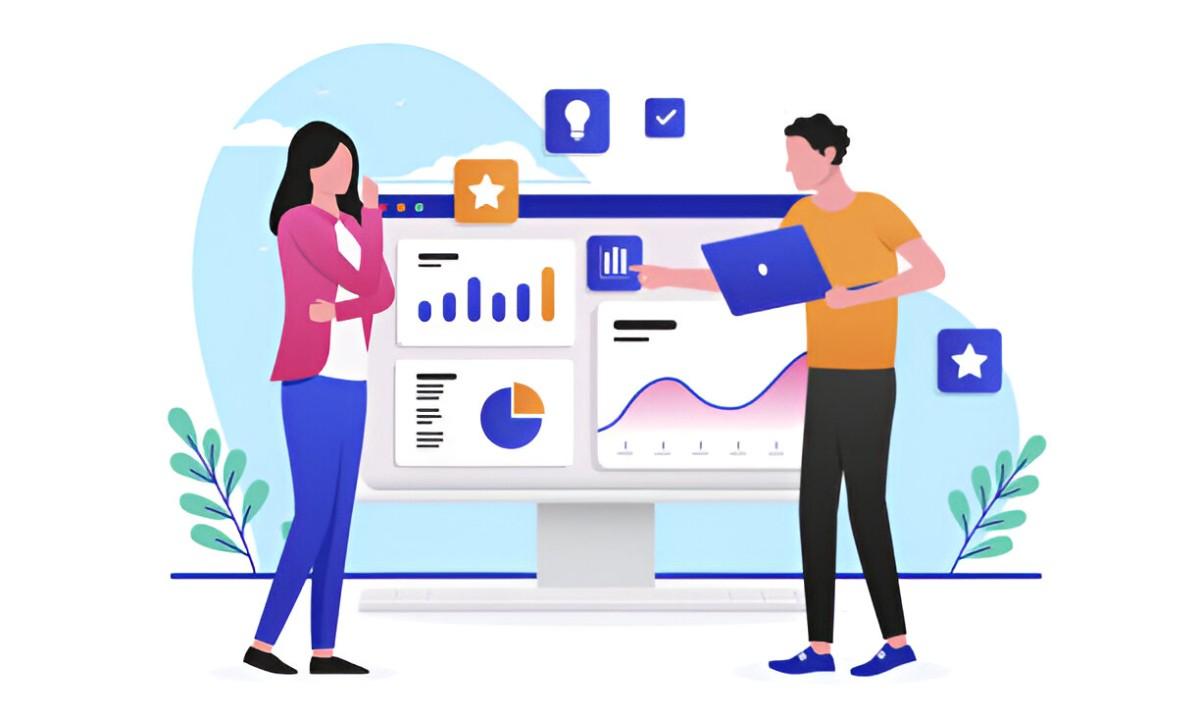When I first started my journey into digital marketing, I didn’t know how to measure my growth. Coaching provided guidance, but progress felt abstract without clear benchmarks. Over time, I realized tracking progress isn’t just about metrics—it’s about connecting effort with outcomes. In this article, I’ll walk you through practical strategies for monitoring your progress during digital marketing coaching.
Define Success from the Outset
Progress begins with clarity. Before diving into coaching, I take time to define what success looks like. For me, this means setting specific, measurable goals. Instead of vague aspirations like “improve SEO,” I frame goals like “increase organic traffic by 20% in three months.” These goals anchor my efforts and provide a baseline for tracking.
Table: Examples of Specific vs. Vague Goals
| Vague Goal | Specific Goal |
|---|---|
| Get better at SEO | Achieve a 20% increase in organic traffic |
| Improve social media | Grow Instagram engagement rate by 10% |
| Learn email marketing | Achieve a 25% open rate for my next campaign |
Break Down Goals into Milestones
Big goals can feel overwhelming. To make them manageable, I break them into smaller milestones. For example, if my goal is to boost organic traffic, my milestones might include conducting a keyword audit, optimizing existing content, and creating new blog posts. This step-by-step approach gives me a sense of accomplishment along the way.
Monitor Key Performance Indicators (KPIs)
KPIs are my compass. These metrics tell me whether I’m moving in the right direction. Depending on the focus of my coaching, I prioritize different KPIs. For instance, during an SEO module, I track keyword rankings and bounce rates. In a social media session, I focus on engagement rates and follower growth.
Table: Common KPIs by Channel
| Channel | Key Metrics | Why It Matters |
|---|---|---|
| SEO | Organic traffic, rankings | Tracks visibility and reach |
| Social Media | Engagement rate, impressions | Measures audience connection |
| Email Marketing | Open rate, click-through rate | Gauges campaign effectiveness |
| PPC | CTR, conversion rate | Evaluates ad performance |
Use Tools to Track Data
Digital marketing offers a wealth of tools for tracking data. I use Google Analytics to monitor website performance, SEMrush for SEO metrics, and Hootsuite for social media insights. These tools don’t just collect data—they help me identify patterns. For instance, if my bounce rate spikes, I’ll investigate which pages are causing visitors to leave.
Schedule Regular Check-Ins
During coaching, I schedule regular check-ins to evaluate progress. This might mean weekly updates with my coach or monthly self-assessments. These sessions are an opportunity to celebrate wins, troubleshoot challenges, and refine strategies. For example, if an ad campaign underperforms, I’ll review the targeting and adjust accordingly.
Keep a Progress Journal
A progress journal is my secret weapon. After each coaching session, I document what I learned, the actions I took, and the results I observed. Over time, this journal becomes a rich resource for reflection. When I review it, I can see patterns—what works, what doesn’t, and how I’ve grown.
Ask for Feedback
Feedback is invaluable. I’ve learned to ask my coach for honest, specific input. If my content isn’t resonating, I want to know why. Constructive criticism might sting, but it’s essential for growth. Beyond coaching sessions, I also seek feedback from peers, colleagues, and even my audience.
Adjust Your Strategy as Needed
Tracking progress isn’t just about measuring—it’s about adapting. If a tactic isn’t delivering results, I revisit the strategy. For example, if my email open rates plateau, I’ll experiment with different subject lines or segmentation approaches. Flexibility ensures I’m not locked into ineffective methods.
Celebrate Small Wins
Progress isn’t always linear. Along the way, I’ve learned to celebrate small victories. Whether it’s a modest increase in website traffic or a successful A/B test, these milestones keep me motivated. Recognizing these achievements also reinforces the value of consistent effort.
Use Visual Dashboards
Visual dashboards simplify tracking. Tools like Data Studio and HubSpot let me create custom dashboards that display my KPIs at a glance. These visuals make it easy to spot trends and communicate progress to stakeholders. For instance, a spike in CTR on a dashboard immediately tells me which campaigns are performing well.
Compare Progress Against Benchmarks
Benchmarks provide context. I often compare my metrics to industry standards or my past performance. For example, if my email open rate is 25% and the industry average is 20%, I know I’m doing well. Conversely, if my CTR is below average, I’ll dig deeper to identify issues.
Table: Example Benchmarks by Industry
| Metric | Industry Average (B2B) | Industry Average (B2C) |
|---|---|---|
| Email Open Rate | 21% | 19% |
| Social Engagement | 1.8% | 2.1% |
| PPC Conversion Rate | 3.75% | 2.9% |
Reflect on Qualitative Growth
Not all progress is numerical. Sometimes, the biggest wins are intangible. I’ve grown more confident in presenting strategies to clients, gained a deeper understanding of analytics, and improved my writing skills. These qualitative gains often complement the quantitative metrics, creating a fuller picture of growth.
Track Return on Investment (ROI)
Ultimately, coaching is an investment. I track ROI by comparing the cost of coaching with the outcomes it delivers. For example, if coaching helps me improve ad performance, I’ll calculate the revenue generated from those campaigns. This approach ensures the investment is worthwhile and identifies areas for improvement.
Avoid Common Pitfalls
Tracking progress isn’t without challenges. One pitfall I’ve encountered is over-focusing on vanity metrics, like follower counts, that don’t drive meaningful results. Another is inconsistency—skipping regular check-ins or failing to update my progress journal. Being aware of these pitfalls helps me stay on track.
Conclusion
Tracking progress during digital marketing coaching isn’t just about numbers—it’s about understanding your journey. By setting clear goals, monitoring KPIs, and reflecting on both quantitative and qualitative growth, you can maximize the value of coaching. The process requires effort, but the rewards—both in skills and results—make it worthwhile. As I continue my own journey, I’m reminded that progress isn’t always flashy. Often, it’s the steady accumulation of small wins that leads to big successes.





